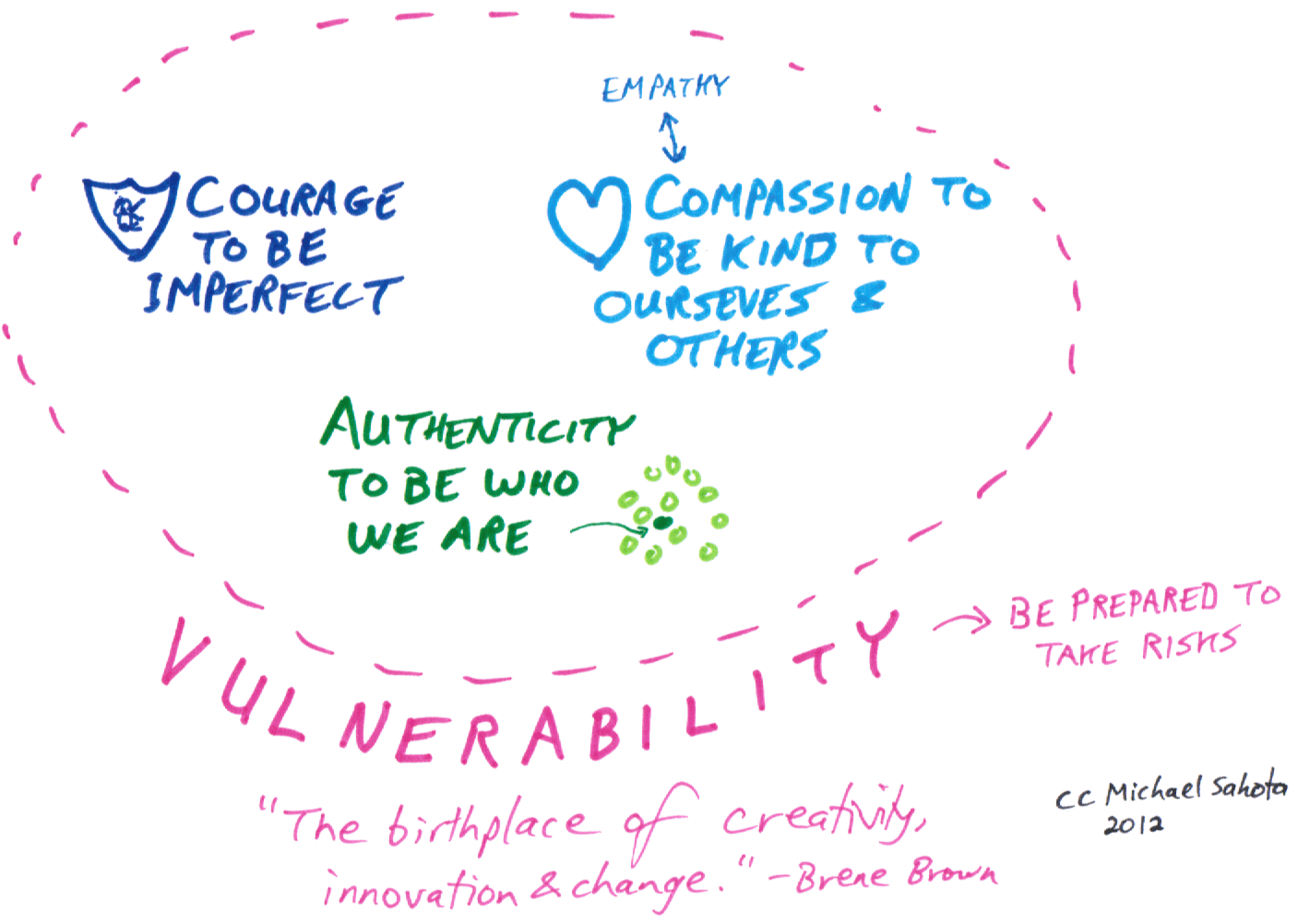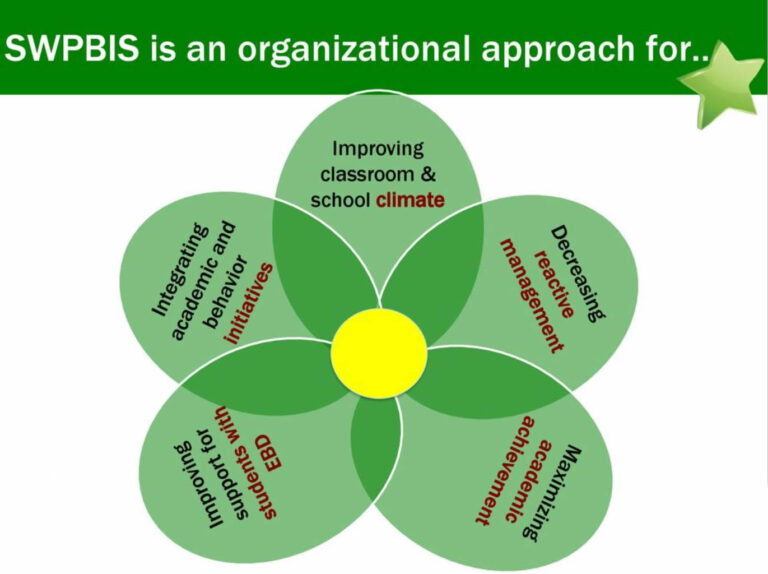Preface
SWPBIS (School-Wide Positive Behavioural Interventions and Supports) is a framework for understanding behaviour and supporting students who may engage in behaviours which staff may describe as ‘challenging.’
‘Every system is perfectly designed to get the results it is getting’. (Dunning) If you wish to change outcomes, you must change the system that is producing the undesirable results’.
PBS rejects simple behavioural strategies traditionally used in schools. Such strategies may ‘address’ behaviour in the short-term but rarely in the long term. This is because they fail to take into account the underlying, often deep-seated, reasons for behaviour.
In this respect SWPBIS is about ‘illumination’ not just ‘elimination.’ It enables us to interpret and understand behaviour within the context of its wider psycho-social and biological influences. This includes the impact of past trauma, cognitive impairment, and intellectual disabilities. Having an evidenced-based understanding enables staff to then select the appropriate strategies and interventions to make sure the student gets the right level of support at the right time to meet their needs.
SWPBIS is ideally suited to all education settings including mainstream schools, pupil referral units, and also schools specialising in SEMH, and SEN. The ultimate objective is that schools have a structured framework for making sure that all students have their needs met (18). It provides additional layers of support for those who require more time, more skills and more guidance, delivered in a way that addresses their social-emotional and developmental needs. This provides the platform for academic and social success.
Introduction
Challenging behaviour, academic underachievement and poor development of prosocial skills continue to be a problem within many of our schools. Luiselli et al (2005) points out that problems such as challenging behaviour, bullying, vandalism and outright violence create an unsafe learning environment, undermine teaching, and pose a threat to the school community. Furthermore, the early onset of discipline problems in school children predicts later maladjustment. ‘Thus, children who engage in anti-social behaviours at a young age are more like than their non-aggressive peers to respond similarly when older and as adults.’ (1)
Traditionally, systems of responding to challenging behaviour within schools have been primarily reactive (waiting for things to go wrong) and overly reliant on punishment-based strategies to try and (re)shape behaviour. This doesn’t seem to be working very efficiently in most instances. Yet this system tends to prevail in many education settings. (2)
As Einstein noted;
“The definition of insanity is doing the same thing over and over again but expecting different results.”
Research suggests that around 85% of behavioural problems in schools are related to inherent problems with the systems being used. These problems can be ameliorated only through the actions of those who shape the system. This would include, headteachers, senior leadership team members, governors, policymakers, and of course teachers and teaching assistants. Put another way the fault is with the system, not with the students. (3)
Many ‘systems’ are rather reactive in their approach to behaviour and a ‘wait to fail’ education model inevitably leads to both behavioural dysfunction and academic underachievement. This can result in a vicious cycle; traditionally as behaviour deteriorates, increasingly more punitive sanctions are imposed in the belief this will put students back on the ‘right track’. This may seem intuitively correct, but it doesn’t take account of why the behaviours are taking place in the first instance. Such an approach is flawed and destined to generate higher levels of challenging behaviour. This dynamic is underpinned by a simple but powerful principle; the more punitive and restrictive an environment becomes, the worse the quality of life and wellbeing for those studying in it becomes. There is substantial research which demonstrates that diminished quality of life produces increases in challenging behaviour, not reductions. SWPBIS provides an alternative to this approach.
SWPBIS provides a proactive model designed to create an environment that enables effective teaching and high levels of learning. Adopting a proactive approach results in improvements to the quality of life and wellbeing of students and staff alike, a natural consequence of this is reductions in both challenging behaviour and the use of restrictive practices. SWPBIS is applicable within general and special education settings (SEN, SEMH). It is being used successfully to supplement both trauma-informed, and LD based approaches. (4)
Evolution of SWPBIS
The practices, principles, and systems that characterise SWPBIS have been evolving since the early 1960s. SWPBIS is a marriage of the science of behavioural theory and the values associated with child-centred, individualised behaviour support planning.
It has been developed to improve how schools select, organise, implement, and evaluate behavioural practices in meeting the needs of all students.
SWPBIS is data-driven. Assessments and interventions are based on evidence and research, not hearsay and opinion. Continuous monitoring of progress is employed to ensure interventions are working and where necessary adjusted so that pupils needs continue to be met.
The Aim of SWPBIS
‘The aim of using Schoolwide Positive Interventions and Supports is to create a safe and orderly environment with a positive school climate that enables students to achieve both social and academic success’. (5)
Benefits of SWPBIS
SWPBIS has demonstrated
- Reduced problem behaviour
- Increased academic performance
- Reduction in administrative referrals
- Reductions in suspensions and exclusions
- Improved feelings of safety
- Reduced Bullying Behaviours
- Increased time for instructional leadership
- Reduced staff turnover
- Improved social-emotional competence
- Improved positive school climate and culture.
- Happier staff and students
Breaking the ‘Wait-to-Fail’ Mould
‘SWPBIS counteracts the ‘wait to fail’ model of other frameworks and moves schools towards a model based on proactive preventative and proactive developmental strategies.’
Research tells us that schools utilising traditional approaches to discipline continue to experience significant increases in disruption within the class, violence, and destructive behaviours as well as increases in the number of students excluded from lessons due to suspension and exclusions. Furthermore, these strategies are proven to have a negative impact on academic achievement. (9)
A more proactive approach to implementing effective behaviour support includes actions such as;
- Consistently using and reviewing discipline policies within the classroom and school (Fenning and Bohanon, 2006)
- Developing a discipline team (Noonan, Tunney, Fogal, & Sarich 1999)
- Using data to evaluate discipline codes (Sugai and Horner 2002)
- Using data to devise and monitor individualised behaviour support plans (me 2020 find a reference). (10)
Critically SWPBIS draws from a body of well-established research evidence which provides educators with the necessary tools for creating settings which are conducive to teaching and promoting desirable behaviours as substitutes for behaviours of concern.
On this basis, many schools, both mainstream and special are taking an interest in SWPBIS. This enables schools to shift from a wait-to-misbehave approach that is followed by an attempt to change student behaviour through punishment or high negative impact consequence system to implantation of school-wide prevention and proactive approaches based on PBS. (11)
SWPBIS is a Tiered Intervention Framework
SWPBIS meets the needs of all students through the construction of a continuum of supports for staff and students. There are three tiers to the continuum. At each tier there is an emphasis on outcomes in the form of agreed expectations for student and staff behaviour, and data to guide decision making about what strategies should be used to support student learning and social behaviour. There is also a strong emphasis on the system supports that will be needed to build competence with new or revised practice amongst staff within the school.
It provides all students with universal instruction, called Tier One (or Primary Prevention), using instructional and behavioural principles to teach a handful of schoolwide behavioural expectations (for example, be safe, be considerate, be responsible, be respectful). This foundational level serves a preventative purpose to mitigate challenging behaviour, and at least 80% of the students’ needs are met through universal instruction alone. (12)
A range of increasingly intensive evidence-based support is available for students who need more direct support for behavioural concerns. About 10 to 15 % of students require supplemental targeted support called Tier 2 (or Secondary Prevention), and 3 to 5 % require intensive, highly individualised support called Tier 3 (or Tertiary Support). (13)
This produces a healthy educational environment within which all student’s needs are met It’s important to note that these figures represent a healthy system and is the ideal outcome of implementing SWPBIS. Some schools may serve populations in which most students initially appear to need Tier two or Tier three supports; however once the foundational systems and supports are in place, such schools can achieve outcomes that represent a healthy system (i.e. one in which at least 80% of students needs are met with tier 1 interventions alone, no more than 10 to 15% require tier 2 , and no more than 5% require tier 3). (14)
Further Breakdown of Tiers of Support
At every level systems and interventions are informed by evidence; data, facts and research, not opinion and hearsay. A comprehensive toolkit is available to achieve this. Tier one and two assessments can usually be facilitated by collating existing data and all staff will be able to utilise these tools. The toolkit for students with more complex needs and behaviours is a little more sophisticated and may require some staff to have training in functional assessment (or contracted in).
Specific implementation elements
Tier one (Primary Prevention-School wide systems aimed at all pupils)
- Behavioural expectations clearly defined and described
- Behavioural expectations taught
- Reward system for reinforcing expected behaviours
- Continuum of consequences for problem behaviours
- Continuous data collection and use for decision making (15)
Tier two (Secondary Prevention-targeted support, short term- intended to socialise students into a position where Tier 1 supports meet their needs).
- Universal screening
- Progress monitoring for at-risk students
- Systems for increasing structure, consistency and predictability
- System for increasing contingent adult feedback (drop-in mentor meetings)
- System for linking academic and behavioural performance
- System for increasing home/school communication
- Data collection and use for decision making (primarily existing data) (16)
Tier 3 (Tertiary prevention-highly individualised, intensive support for chronic behavioural difficulties. Often long term).
- Functional based assessments
- Team-based comprehensive assessment
- Linking of academic and behavioural supports
- Individualised intervention based on formal assessment information focused on: (a), Identification/operational description of problem behaviour, (b). Identification of any pertinent health or medication issues, (c). Identification and amelioration of contributing environmental factors (triggers, setting events, sensory issues), (d). The teaching of social and desired performance skills, coping strategies and functionally equivalent behaviours as replacements for problem behaviours. (e). Strategies for extinction of problem behaviour, (f) Strategies for enhancing contingent reward of the desired behaviour, (g) Use of reactive strategies to be used to keep everybody safe if behaviour escalates to crisis (de-escalation and last resort restrictive interventions).
- Data collection and use for decision making (17) It’s important to note that the individualised strategies used in tier 3 take precedent over the school-wide strategies used in tier 1
We will be taking a closer look at these data collection tools and interventions in future papers.
References
- Bohanon et al 2006., 2006; Netzel & Eber, 2003) in (An Educators Guide to Schoolwide Positive Behavioural Interventions and Supports -Integrating all three tiers. J.E. Harlacher, BJ Rodriguez . Marzano Research 2018). (14)
- The Trauma and Attachment Aware Classroom. A Practical Guide to Supporting Children Who Have Encountered Trauma and Adverse Childhood Experiences. Rebecca Brooks (2020). JKP Publishing. (4) (10) (11)
- The PBIS Tier 1 Handbook. Djabrayan & Hauser. Corwin 2015 (3) (6) (8)
- The PBS Tier 2 Handbook. Djabrayan & Hauser. Corwin 2018 (18)
- An Educators Guide to Schoolwide Positive Behavioural Interventions and Supports -Integrating all three tiers. J.E. Harlacher, BJ Rodriguez. Marzano Research 2018) (5) (13)
- Horner, R.H., Sugai, G., & Anderson, C.M. (2010) Examining the evidence base for school-wide positive behaviour support. Focus on Exceptional Children, 42(8), 1-14 (15), (16), (17)
- Luiselli, J.K., Putnam, R.P., Handler M.W., Feinberg A.B. (2005). Whole School Positive Behaviour Support: Effects on student discipline problems and academic performance. Educational Psychology, Vol.25, Nos. 2-3, April-June 2005, pp 183-198. (1)
- Skiba, R.J., & Rausch M.K. (2005). Zero tolerance, suspension, and expulsion: Questions of equity and effectiveness. In C. Everston & C.S. Weinstein (Eds.), Handbook of Behaviour Management: Research, practice, and contemporary issues (pp.1063-1089). Mahwah, NJ: Erlbaum. (9)
- PBS isn’t about Rewards or punishment, it’s about building relationships. Kate Strutt, Redstone 2017 (2) (7)
Related posts:
 Using Positive Behaviour Support (PBS) to reduce the use of restrictive practices
Using Positive Behaviour Support (PBS) to reduce the use of restrictive practices
 The Power of Vulnerability and Shame Resilience in Education
The Power of Vulnerability and Shame Resilience in Education
 A Guide for Teachers – Promoting Executive Function Skills in the Classroom
A Guide for Teachers – Promoting Executive Function Skills in the Classroom
 Meeting the Needs of Every Student: Implementing Trauma-Informed Practices in the Classroom
Meeting the Needs of Every Student: Implementing Trauma-Informed Practices in the Classroom




